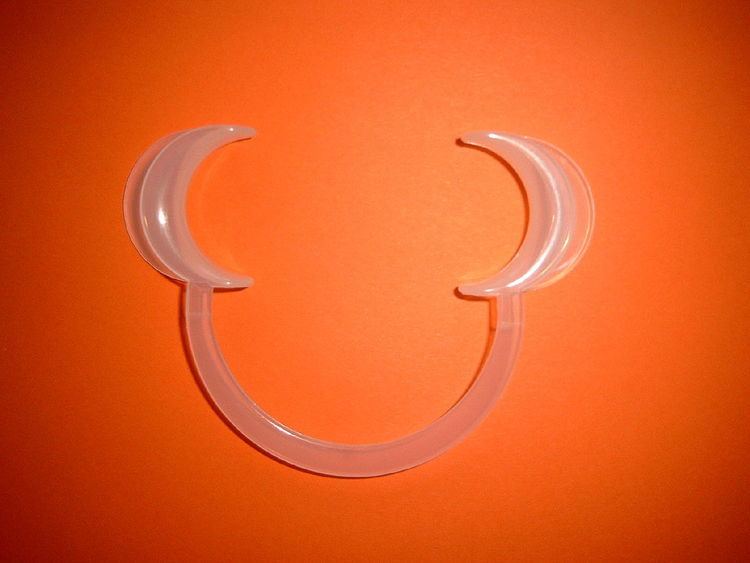 | ||
Dental instruments are tools that dental professionals use to provide dental treatment. They include tools to examine, manipulate, treat, restore and remove teeth and surrounding oral structures.
Contents
- Examination instruments
- Mirror
- Probes
- Retractors
- Local anesthesia
- Dental handpieces
- Dental laser
- Dental torque wrench
- Burs
- Operative burs
- Excavators
- Burnishers
- Pluggers
- Curettes
- Removable prosthodontics
- Dental forceps
- Elevators
- Chisels
- Orthodontic instruments
- Endodontic instruments
- References
Standard instruments are the instruments used to examine, restore and extract teeth and manipulate tissues.
Examination instruments
These tools allow dental professionals to manipulate tissues for better visual access during treatment or during dental examination.
Mirror
Dental mirrors are used by the dentist or dental auxiliary to view a mirror image of the teeth in locations of the mouth where visibility is difficult or impossible. They also are used for reflecting light onto desired surfaces, indirect vision, and with retraction of soft tissues to improve access or vision.
Probes
Retractors
Local anesthesia
Anesthesia is broken down into three main categories: local, regional, and general, all of which affect the nervous system in some way and can be administered using various methods and different medications.
Local anesthesia is an anesthetic drug (which can be given as a shot, spray, or ointment) that numbs only a small, specific area of the body (for example, a foot, hand, or patch of skin). With local anesthesia, a person is awake while sedated. Local anesthesia lasts for a short period of time and is often used for minor outpatient procedures (when patients come in for surgery and can go home that same day). For someone having outpatient surgery in a clinic or doctor's office (such as the dentist or dermatologist), this anesthetic is likely used. The medicine can numb the area during the procedure and for a short time afterwards to help control post-surgery discomfort.
Dental handpieces
Dental handpieces come in many various types which include: High speed air driven (also known as an airotor), slow speed, friction grip, surgical hand piece. The use of an air compressor is suggested to utilize high speed air driven equipment.
Dental laser
A dental laser is a type of laser designed specifically for use in oral surgery or dentistry.
The use of a laser can decrease morbidity after surgery, and reduces the need for anesthetics. Because of the cauterization of tissue there will be little bleeding following soft tissue procedures, and some risks of alternative electrosurgery procedures are avoided.
Dental torque wrench
A dental torque wrench or restorative torque wrench is a torque wrench used to precisely apply a specific torque to a fastener bolt for fixation of an abutment, dentures or prosthetics on a dental implant.
Burs
Dental Burs cutting surface are either made of a multifluted tungsten carbide, a diamond coated tip, or a stainless steel multi fluted rosehead. There are many different types and classifications of burs. Some of the most common are: the round bur (sizes ¼ to 10) or inverted cone (sizes 33½ to 90L). Burs are also classified by the type of shank. For instance a latch type, or right angle bur, is only used in the slow speed handpiece with contra-angle attachment. Long shank or shaft is only used in the slow speed when the contra-angle is not in use, and finally a friction grip bur, which is a small bur, is used only in the high-speed handpiece.
There are many bur shapes that are utilized in various specific procedures.
Operative burs
Flat fissure, pear-shaped, football, round, tapered, flame, chamfer, bevel, end cut, bud bur, steel, inverted cone, diamond, brown stone, and greenstone.
Excavators
Burnishers
Pluggers
Pluggers are also known as amalgam condensers. They are used to achieve a well condensed filling by compressing the filling material into the cavity and applying pressure.
Curettes
Types include:
